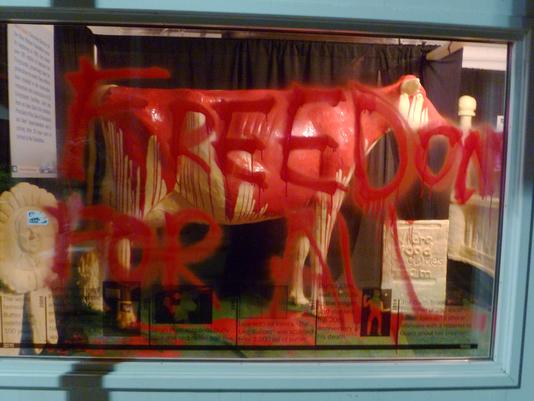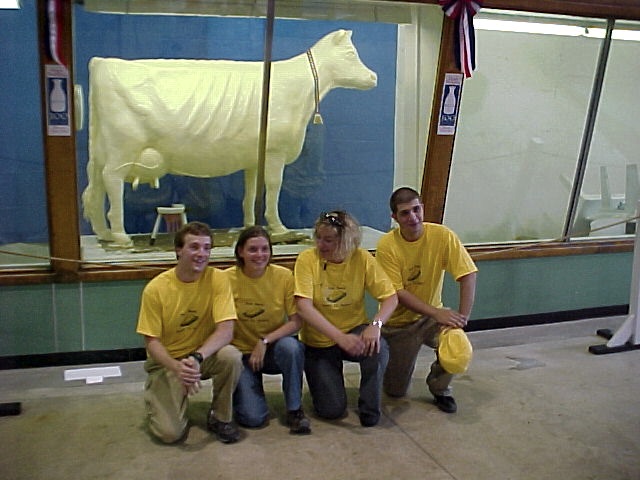So you can imagine my horror when I learned yesterday that an animal welfare group poured red paint on the Buttercow in protest (read the story via NPR).
I think it’s important to contextualize my comments here and note that at the time of documentary making, I had been vegetarian for seven years. I was never vegan for more than a month (yogurt! goat cheese! honey! beautiful leather frye boots!), but I made it a full twelve years of vegetarianism before giving up during fieldwork in Bolivia. I now quite enjoy fried chicken, pork chicharones, cuy (roasted guinea pig), and anticuchos (grilled beef heart), among many other forms of meat. But I also still truly believe that vegetarianism is far more environmentally friendly and sustainable than regular meat-eating. That said, I ultimately recognize that one’s ability and desire to eat meat or not are substantially culturally influenced. Things like purchasing power, national location, regional location, local location, racial identity, gender, religion, subcultural affiliation or identification, and who knows what else profoundly structure not only what we perceive as desirable food but also what we are physically able to eat.
So my reaction is more complicated than it may appear. Though I don’t generally condone destructive practices as protest, I also don’t wholly disagree with the protestors’ intentions. Helping to thaw 600 pounds of overly cooled butter by running my hands through it may have improved it’s consistency for sculpting but also made me shun the stuff for more than a month. There is something foul and inedible about massive amounts of dairy product. But in the end, with my apologies to anti-speciesist friends, I have to conclude that the protestors’ actions were misguided.
And, like all icons, the Buttercow adapts to symbolize prevailing social issues and political perspectives. What was once a symbol of progress, now has come to be a nostalgic representation of a disappearing way of life. As family farms disappear and Concentrated Animal Feeding Operations replace them, the Buttercow stands as a testament to the value placed on farmers who practice true animal husbandry and forms of agriculture that stand in opposition to the CFO’s that have become so ubiquitous. The 600 pounds of butter used in Illinois’s Buttercow comes from Prairie Farms, which is a farmer owned cooperative whose cows are free range and 100% hormone free. Put simply, to it's supporters, the Buttercow is a symbol of family farmers who intimately know and care for their animals, and is seen as oppositional to the forms of industrialized agriculture that exploit animals to their breaking point before discarding them.
Of course, many animal liberation groups see no distinction between large scale animal exploitation and that which is family owned. But that is precisely my point. In ignoring or misunderstanding the distinction, I believe such protestors are alienating those who could be powerful allies. And besides, pouring red paint on the butter only means that instead of reusing it next year, they’ll have to get a brand new 600 pound batch.
see my writing at food culture index or hit the "butter" tag to the right to see my earlier fieldnotes


 RSS Feed
RSS Feed
